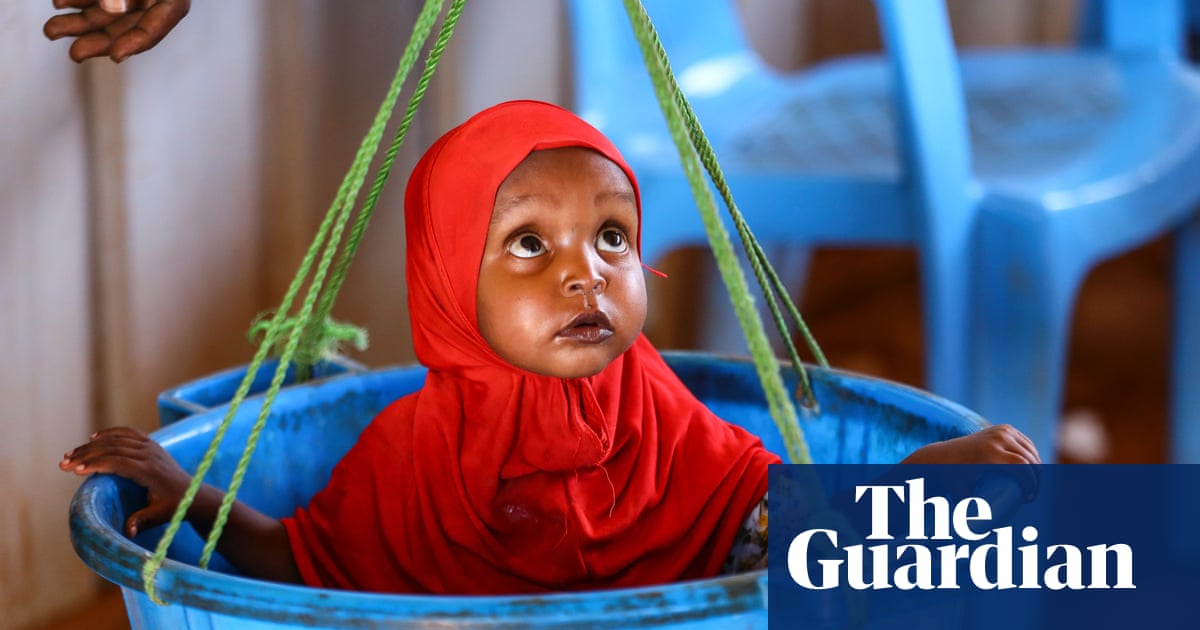One young child in four globally has a diet so restricted it is likely to harm their growth, brain development and chances of survival, according to a new report.
Many of the children live in areas that have been designated by the UN as âhunger hotspotsâ â including Palestine, Haiti and Mali â where access to food is expected to deteriorate over the coming months.
The first report from the UNâs childrenâs agency, Unicef, to assess the diets of under-fives, found about 181 million from almost 100 countries were consuming, at most, only two food groups on a daily basis â typically milk with a starchy food such as rice, maize or wheat.
This meets the criteria for âsevere food povertyâ and means they are âchildren living on the brinkâ, said Catherine Russell, Unicefâs executive director.
âThis can have an irreversible negative impact on their survival, growth and brain development,â she said. âChildren who consume just two food groups per day, for example rice and some milk, are up to 50% more likely to experience severe forms of malnutrition.â
Countries with higher levels of severe food poverty also tended to have higher levels of stunting, where children are significantly shorter than expected for their age.
The after-effects of the Covid-19 pandemic, conflicts and the climate crisis are among the causes of high food prices, the report, published on Thursday, found. However, household income was not the only driver of diet quality, with children from wealthier households in some countries also in severe food poverty due to a predominance of unhealthy and non-nutritious foods, and a lack of knowledge among parents about what a healthy diet should look like.
While less than 10% of children in severe food poverty are fed fruit and vegetables, and less than 5% meat, poultry and fish, fast foods and sugary drinks were marketed aggressively and becoming âentrenchedâ in many of their diets, the report said.
It found that while progress globally towards improving childrenâs diets was slow, some regions and countries had shown improvements â in west and central Africa, severe child food poverty fell from 42% to 32% over the past decade.
However, it said that conflict and climatic shocks were intensifying the issue, particularly in fragile settings. In Somalia, where repeated droughts have been followed by floods, more than 80% of caregivers said their child had been unable to eat for an entire day.
after newsletter promotion
That warning was echoed by the UNâs Food and Agriculture Organization (FAO) and the World Food Programme, which said on Wednesday that 18 âhunger hotspotsâ were likely to see food insecurity deteriorate further before October. They urged scaled-up international efforts in those areas.
âArmed violence and conflict remain the primary causes of acute food insecurity across numerous hunger hotspots,â they said, also highlighting poor economic conditions. Mali, the Gaza Strip, South Sudan, Sudan and Haiti were areas âof highest concernâ with the risk of deterioration towards âcatastrophic conditionsâ, further starvation and death before October.
Chad, the eastern provinces of the Democratic Republic of the Congo, Myanmar, Syria and Yemen were hotspots of âvery high concernâ, while Central African Republic, Lebanon, Mozambique, Myanmar, Nigeria, Sierra Leone, Zambia, Burkina Faso, Ethiopia, Malawi, Somalia and Zimbabwe also remained on or joined the list.








